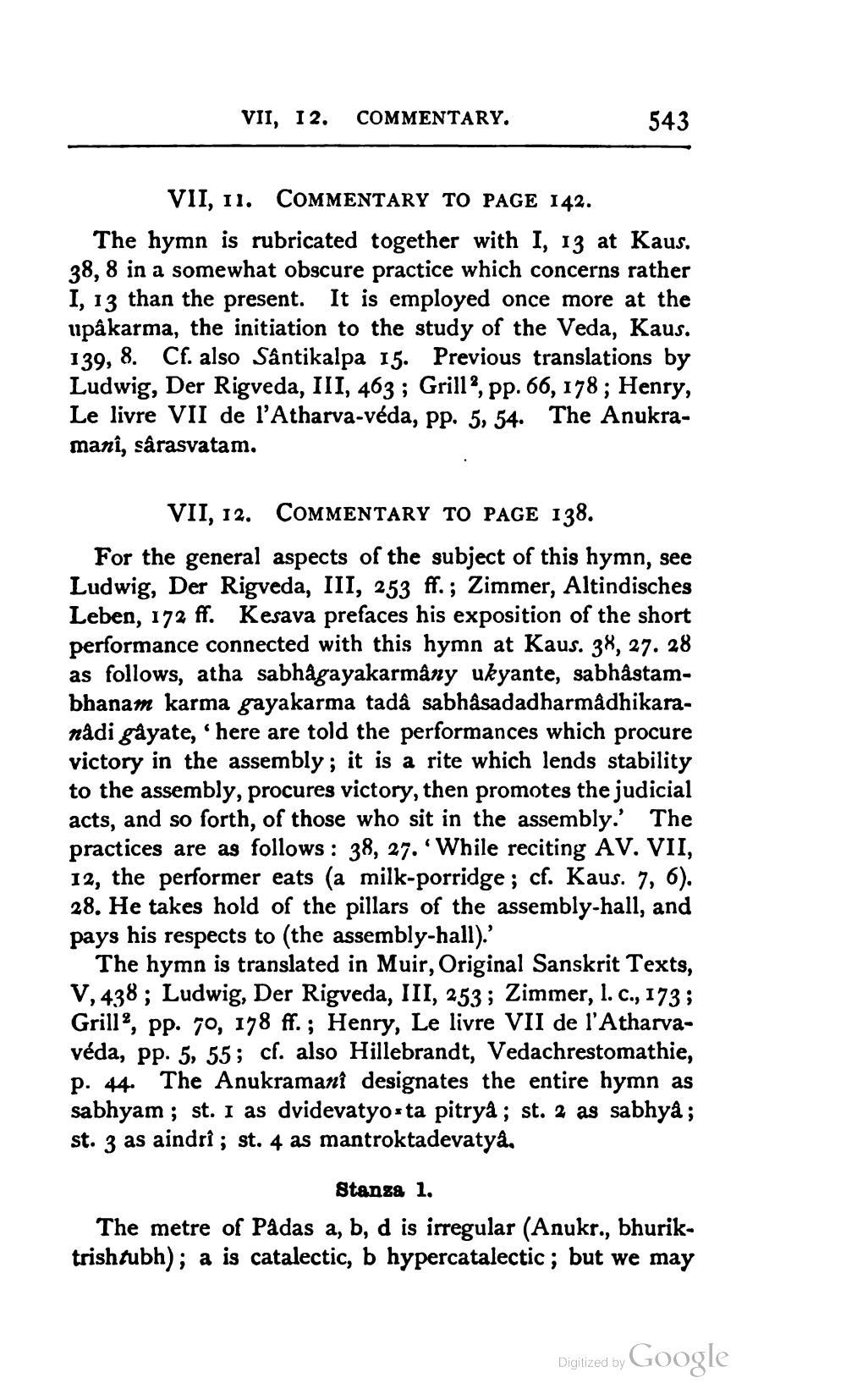________________
VII, 12. COMMENTARY.
543
VII, 11. COMMENTARY TO PAGE 142. The hymn is rubricated together with I, 13 at Kaus. 38, 8 in a somewhat obscure practice which concerns rather I, 13 than the present. It is employed once more at the upâkarma, the initiation to the study of the Veda, Kaus. 139, 8. Cf. also Sântikalpa 15. Previous translations by Ludwig, Der Rigveda, III, 463 ; Grill?, pp. 66, 178; Henry, Le livre VII de l'Atharva-véda, pp. 5, 54. The Anukramani, sarasvatam.
VII, 12. COMMENTARY TO PAGE 138. For the general aspects of the subject of this hymn, see Ludwig, Der Rigveda, III, 253 ff.; Zimmer, Altindisches Leben, 172 ff. Kesava prefaces his exposition of the short performance connected with this hymn at Kaus. 38, 27. 28 as follows, atha sabhågayakarmány ukyante, sabhåstambhanam karma gayakarma tadâ sabhâsadadharmådhikaranadi gåyate, here are told the performances which procure victory in the assembly; it is a rite which lends stability to the assembly, procures victory, then promotes the judicial acts, and so forth, of those who sit in the assembly. The practices are as follows: 38, 27. 'While reciting AV. VII, 12, the performer eats (a milk-porridge; cf. Kaus. 7, 6). 28. He takes hold of the pillars of the assembly-hall, and pays his respects to (the assembly-hall).'
The hymn is translated in Muir, Original Sanskrit Texts, V, 438; Ludwig, Der Rigveda, III, 253; Zimmer, 1. C., 173; Grill?, pp. 70, 178 ff.; Henry, Le livre VII de l'Atharvavéda, pp. 5, 55; cf. also Hillebrandt, Vedachrestomathie, p. 44. The Anukramani designates the entire hymn as sabhyam ; st. I as dvidevatyosta pitrya; st. 2 as sabhya; st. 3 as aindri; st. 4 as mantroktadevatyå.
Stanza 1. The metre of Padas a, b, d is irregular (Anukr., bhuriktrishtubh); a is catalectic, b hypercatalectic; but we may
Digized by Google




